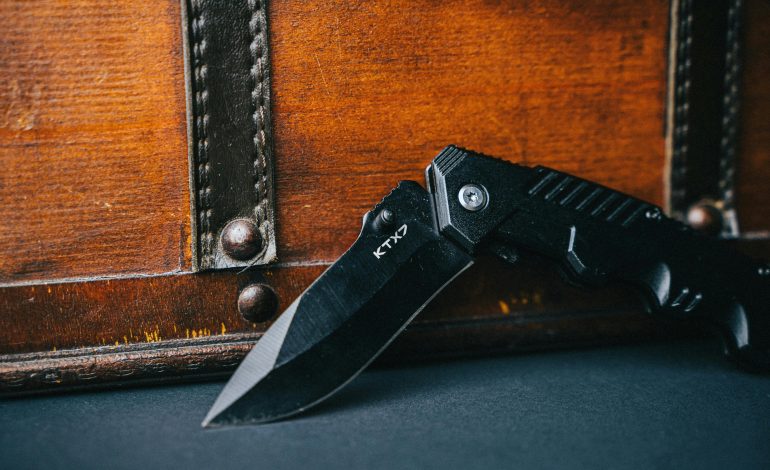Essential Hunting Knives for Beginners: Your Guide to the Best Tools

Essential Hunting Knives for Beginners: Your Guide to the Best Tools
Today on Guest Blogging Space you will read that when it comes to hunting, one of the most important pieces of gear you need is a reliable hunting knife. Whether you are field dressing game, preparing meals, or performing general tasks while in the woods, a good hunting knife is a versatile and essential tool. As a beginner, choosing the right knife can be overwhelming, but understanding the key features of a hunting knife can make the decision easier. Here is a guide to the best hunting knives for beginners, including types, features, and what to look for when choosing one.
1. Types of Hunting Knives
Before diving into specific models, it’s important to know the different types of hunting knives and what they are best used for:
- Fixed Blade Knives: These knives have a solid blade that doesn’t fold, offering strength, reliability, and durability. They’re perfect for field dressing and butchering game.
- Folding Knives: These knives have a retractable blade, making them more compact and easier to carry. They’re great for general use, such as cutting rope or preparing food, but may not be as strong as fixed blades for big-game tasks.
- Gut Hook: These are specialized knives with a hooked blade used to easily open the abdomen of game without puncturing internal organs. They are ideal for hunters who do a lot of field dressing.
2. Key Features to Look for in a Hunting Knife
When selecting a hunting knife, there are a few key features to consider to ensure you choose the best one for your needs:
- Blade Material: The material of the blade plays a significant role in durability and edge retention. Stainless steel is resistant to rust and corrosion, making it ideal for wet conditions. High-carbon steel is known for its sharpness and ability to hold an edge longer but requires more maintenance to prevent rusting.
- Blade Length: The blade length you choose depends on your intended use. For general tasks like skinning or field dressing, a blade between 3 to 5 inches is ideal. For heavier tasks, such as cutting through bone or heavy meat, a larger blade of 6 inches or more may be necessary.
- Handle Material: The handle material should be comfortable to grip, especially in wet conditions. Common materials include wood, rubber, plastic, and synthetic composites. Rubber or textured handles provide a non-slip grip, which is crucial for safe and precise use.
- Tang: The tang refers to the portion of the blade that extends into the handle. A full tang, where the blade extends all the way through the handle, offers better strength and durability.
3. Top Hunting Knives for Beginners
Here are a few popular hunting knives that offer great value for beginners:
- Gerber StrongArm Fixed Blade Knife: This knife is known for its durability and versatility. The 4.8-inch blade is made from high-carbon stainless steel, making it ideal for cutting and field dressing. The rubberized handle ensures a solid grip, and the full tang construction provides strength.
- Benchmade 15022-2 Hunt Knife: This folding knife features a 3.5-inch blade made from stainless steel, offering both corrosion resistance and edge retention. Its ergonomic handle provides comfort, and the knife’s compact size makes it easy to carry on any hunt.
- Buck Knives 119 Special: A classic fixed blade hunting knife, the Buck 119 features a 6-inch stainless steel blade, making it great for larger tasks like skinning or boning. The solid, full tang construction ensures durability, and the traditional wood handle offers a comfortable grip.
- Spyderco Native 5: For those who prefer a folding knife, the Spyderco Native 5 is a great option. It features a 3-inch blade made of high-performance stainless steel and a lightweight, ergonomic handle. Its locking mechanism ensures safety during use.
4. How to Care for Your Hunting Knife
To keep your hunting knife in top condition, regular care and maintenance are necessary:
- Clean After Each Use: Always clean your knife after every use, especially if you’ve used it for field dressing. This will help prevent rust and ensure the blade stays sharp.
- Sharpen the Blade: Use a sharpening stone or honing rod to keep the edge sharp. A dull blade is dangerous and less effective at cutting.
- Store Properly: Keep your knife in a dry place to avoid corrosion. If you’re storing it in a sheath, make sure it’s clean and dry first.
5. Conclusion
Choosing the right hunting knife is essential for a successful hunting experience. As a beginner, focus on finding a knife with the right features, such as blade material, handle comfort, and tang strength, to ensure it can handle the tasks you’ll face in the field. By keeping your knife well-maintained, you’ll have a reliable tool that will serve you on many successful hunting trips ahead.






